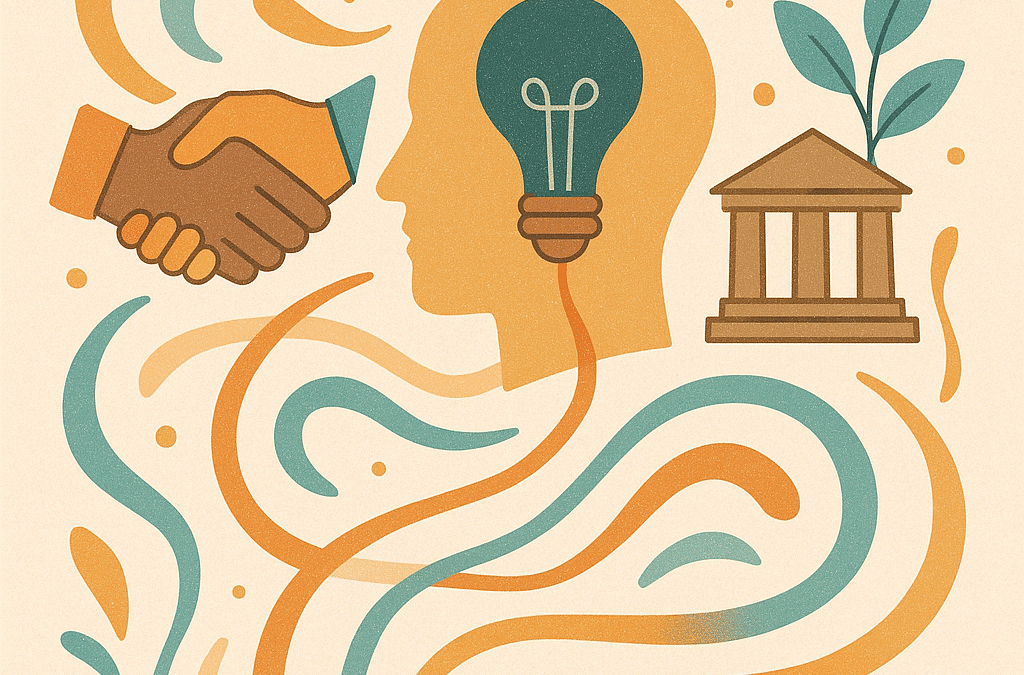We’ve all been there. That moment when you feel like there’s just not enough—not enough time, not enough budget, not enough talent, not enough opportunities to go around. It’s a feeling that creeps into our decision-making, our relationships, and especially into the cultures we build at work.
At Lillian Moya & Company, we spend a lot of time thinking about the human side of economics—not just the numbers and spreadsheets, but how our beliefs about resources shape the way we treat each other and build our organizations. And one of the most powerful (and often invisible) forces at play? Scarcity thinking.
What Is Scarcity Thinking?
Scarcity thinking is exactly what it sounds like: a mindset rooted in the belief that there isn’t enough to go around. Not enough success, recognition, opportunities, or resources. When we operate from scarcity, we see the world as a zero-sum game—if you win, I lose. If you get the promotion, that’s one less opportunity for me. If we invest in your project, mine suffers.
It’s a protective instinct, really. Our brains are wired to notice threats and limitations. But here’s the problem: when scarcity thinking becomes the default lens through which we see everything, it doesn’t just affect our decisions—it fundamentally changes how we show up for one another.
The Human Cost of Scarcity
When scarcity thinking takes root in an organization, you start to see it everywhere:
People hoard information instead of sharing it freely, worried that knowledge is power and giving it away means losing their edge.
Collaboration feels risky because if someone else shines, it might dim your own light.
Innovation stalls because trying something new means using resources that feel precious and limited.
Trust erodes because everyone’s operating from a place of self-protection rather than collective possibility.
The irony? Scarcity thinking actually creates the very limitations it fears. When we hold tight to what we have, we cut ourselves off from the generative power of collaboration, creativity, and shared success.
Human Economics: A Different Approach
This is where human economics comes in—the understanding that how we approach one another isn’t separate from organizational success; it is the foundation of it.
Traditional economics focuses on the allocation of scarce resources. But human economics asks a deeper question: What if the most valuable resources—creativity, trust, collaboration, goodwill—actually multiply when shared rather than divide?
When you share knowledge, you don’t have less of it. When you celebrate someone else’s success, it doesn’t diminish your own. When you invest in relationships and create psychological safety, you unlock innovation and resilience that no amount of hoarding could ever produce.
Building Organizations That Thrive
Organizations rooted in abundance thinking—the opposite of scarcity—approach success differently:
They celebrate wins across the board, knowing that success in one area lifts everyone up.
They invest in people, trusting that developing talent creates capacity rather than depleting it.
They share information freely, understanding that transparency builds trust and trust drives performance.
They encourage experimentation, knowing that innovation requires the space to try, fail, and learn.
These aren’t just feel-good principles. They’re strategic advantages. Study after study shows that organizations with high trust, strong cultures of collaboration, and genuine investment in their people outperform their competitors—not in spite of their people-first approach, but because of it.
The Shift Starts With Awareness
Here’s the good news: scarcity thinking isn’t permanent. It’s a habit, and like any habit, it can be changed.
It starts with noticing. When you find yourself thinking “there’s not enough,” pause and ask: Is that actually true? Or is that fear talking?
Then, practice abundance. Share credit. Celebrate others. Invest in relationships. Create space for collaboration. Make decisions from a place of possibility rather than protection.
And if you’re a leader? Your mindset sets the tone for everyone. When you model abundance—when you demonstrate through your actions that success isn’t finite, that there’s room for everyone to thrive—you give permission for your entire organization to do the same.
The Bigger Picture
At Lillian Moya & Company, we believe that the future belongs to organizations that understand this fundamental truth: how we treat each other matters. Not as a side note to the “real work” of business, but as the very foundation of sustainable success.
Human economics isn’t soft. It’s strategic. It’s recognizing that the quality of our relationships, the generosity of our collaboration, and the abundance of our thinking directly impact our ability to innovate, adapt, and thrive.
So the next time you notice scarcity thinking creeping in—whether in yourself or in your organization—remember: there’s another way. A way that’s more human, more generous, and ultimately, more successful.
What would change in your organization if you approached every decision from abundance rather than scarcity? We’d love to hear your thoughts.

Subscribe To Our Blog & Newsletter
Join our mailing list to receive our team's latest news and blog posts.
You have Successfully Subscribed!
All content addressed from the lillianmoya.com website is Copyrighted © 2023.